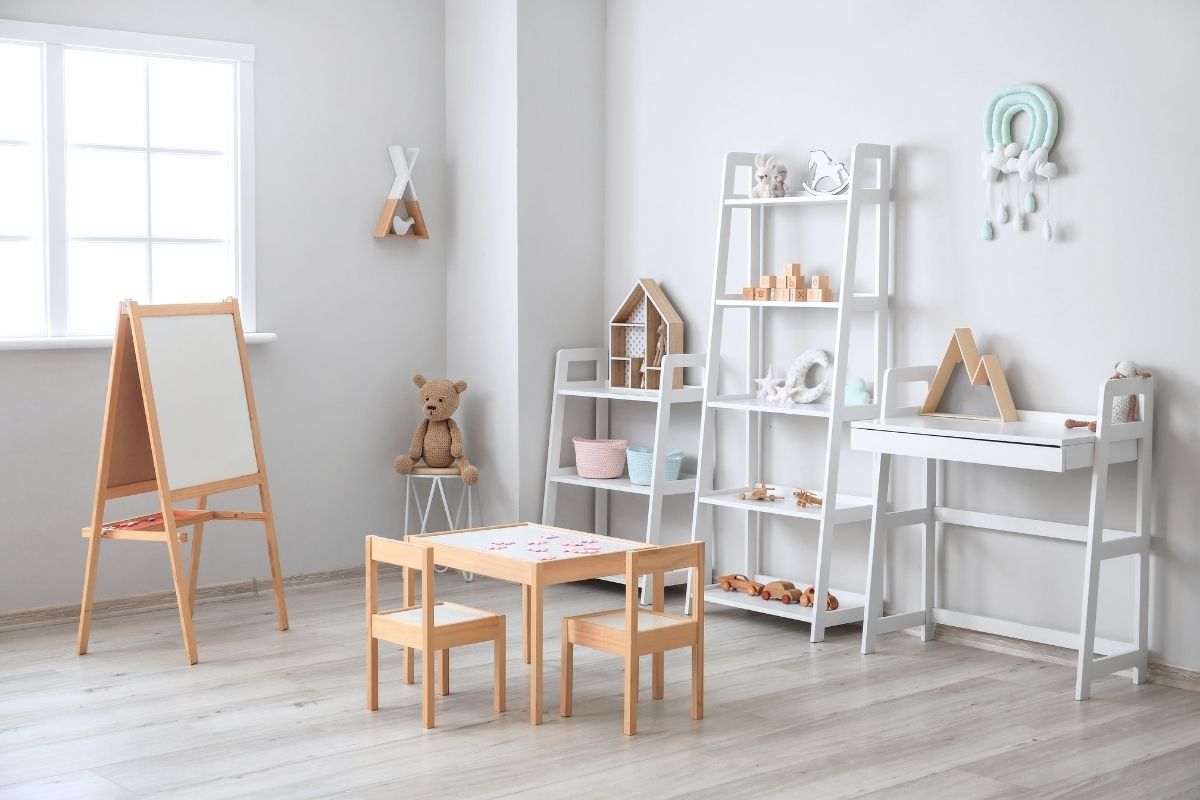A Montessori-inspired playroom combines the philosophy of independent learning with a clean, functional design. In this article, we explore minimalist Montessori playroom ideas that promote hands-on learning, creativity, and independence for children while keeping clutter at bay.
Using Calm, Neutral Color Schemes
The choice of color in a Montessori playroom plays a crucial role in creating an environment that is both stimulating and calming for children. A carefully selected color palette can influence mood, concentration, and overall well-being. In a minimalist Montessori setting, the use of calm and inviting colors helps maintain a serene atmosphere, conducive to focused learning and creativity.
Guidelines for Choosing Colors in a Montessori Playroom
- Soft, Neutral Tones: Opt for gentle and neutral colors such as light gray, beige, or soft pastels. These hues create a tranquil backdrop that doesn’t overwhelm the senses.
- Accent Colors: Use subtle accent colors to add warmth and interest. Soft blues, greens, or muted yellows can be incorporated through accessories, textiles, or a single painted wall.
- Nature-Inspired Palettes: Draw inspiration from nature for color schemes. Earth tones like greens, browns, and blues mirror the natural world and bring a sense of calm and grounding to the space.
- Non-Toxic Paints: Ensure that any paints used are non-toxic and safe for children. Low-VOC or VOC-free paints are ideal for maintaining healthy indoor air quality.
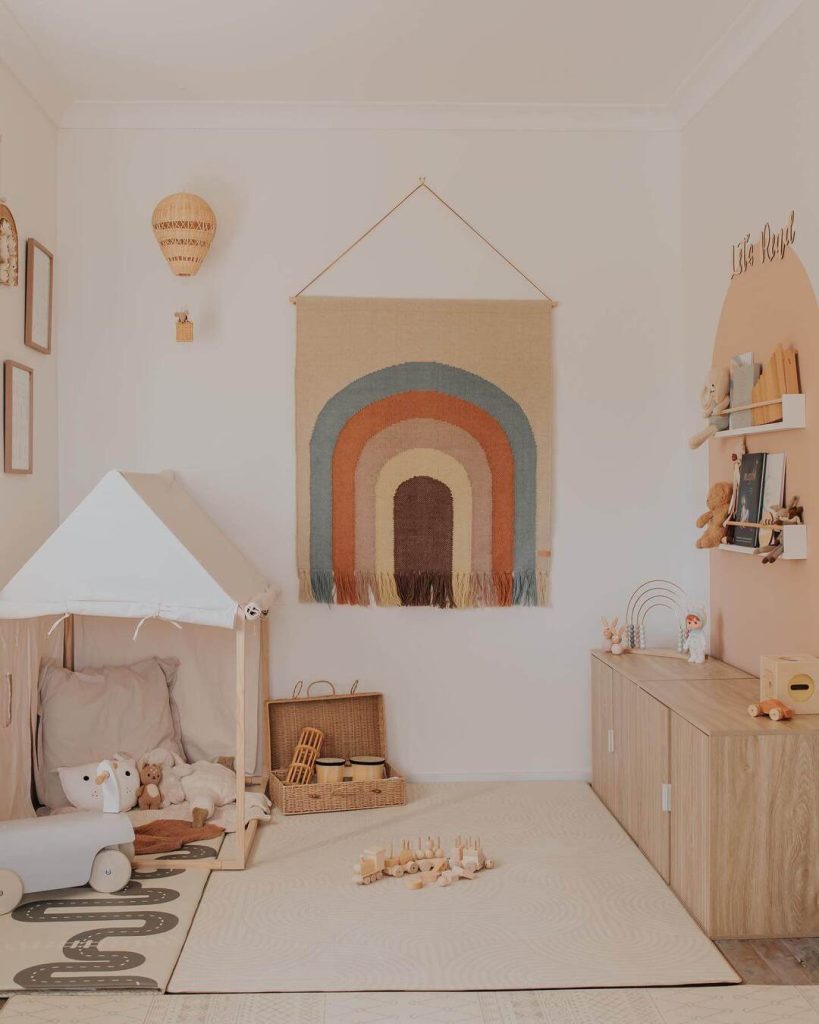
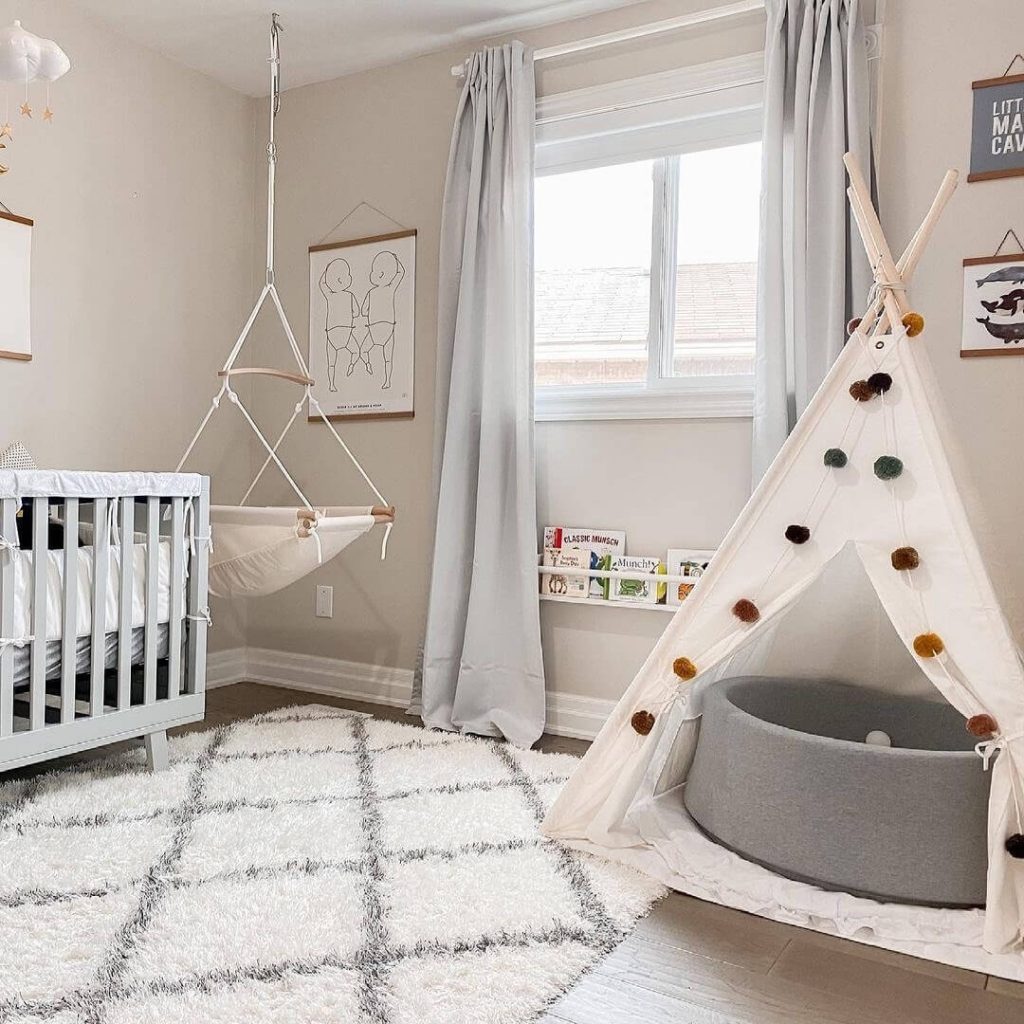
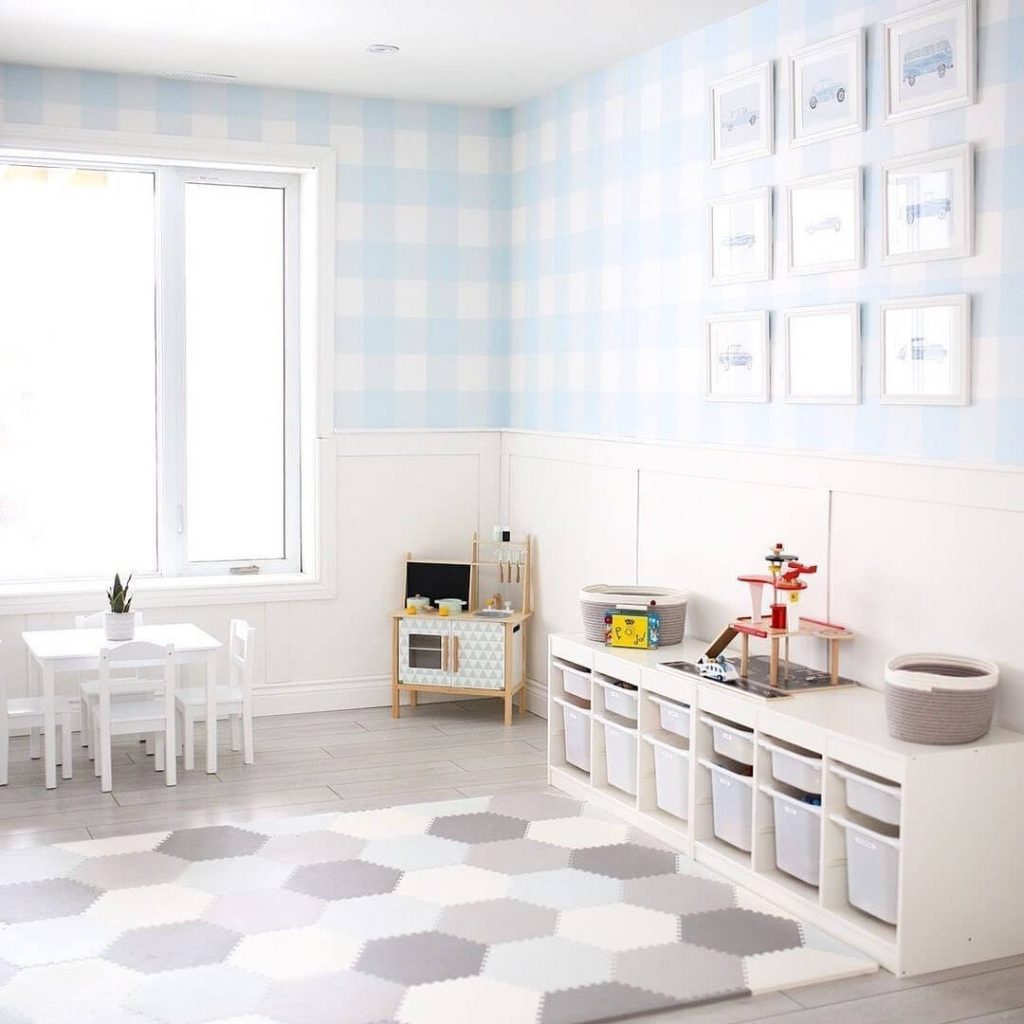
Selecting Purposeful Toys and Activities
Montessori-style playrooms emphasize quality over quantity when it comes to the choice of available activities. In line with Montessori principles, keep toys and materials that are educational, encourage creative play, and are made of natural materials. Each item should have a specific purpose or teach another skill that contributes to the child’s overall development. By selecting meaningful objects and eliminating unnecessary ones, you create a focused environment where kids can learn and grow autonomously.
Ideas for Age-Appropriate Activities
- Toddlers: Wooden blocks, simple puzzles, stacking rings, and shape sorters to develop motor skills and cognitive abilities.
- Preschoolers: Art supplies for creative expression, counting beads or other math-related tools, and tactile sensory play materials.
- School-Age Children: More advanced puzzles and brain teasers, board games that promote critical thinking, and age-appropriate books covering various topics.
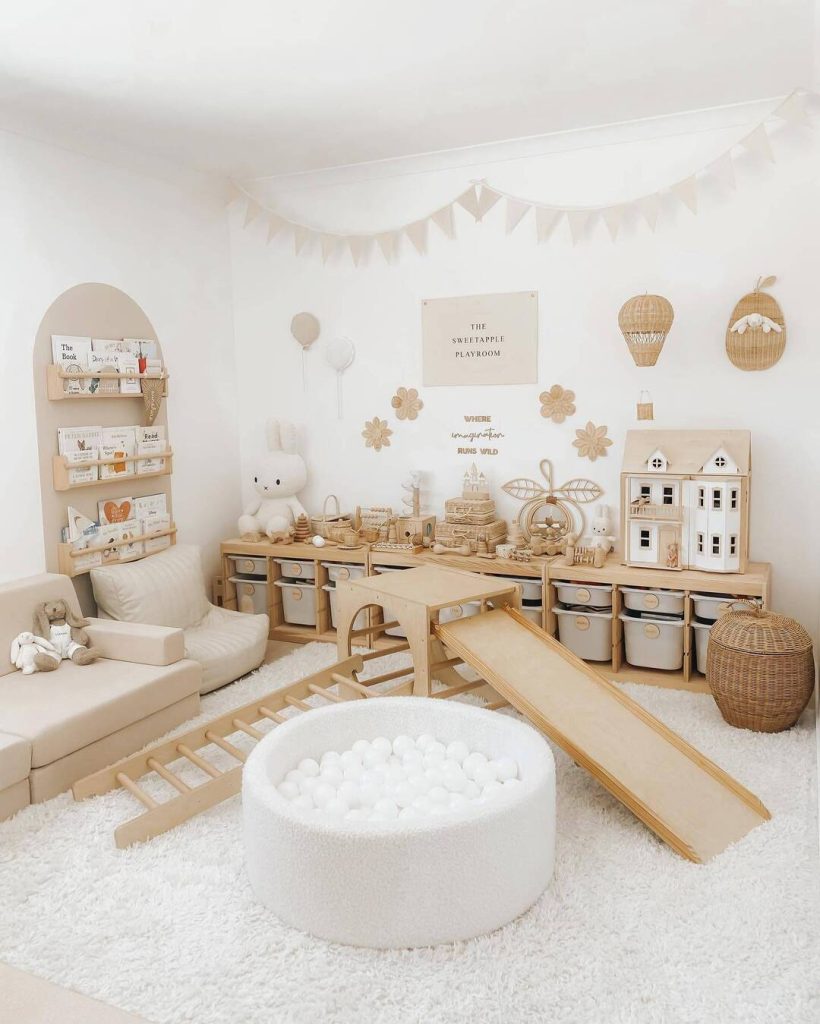
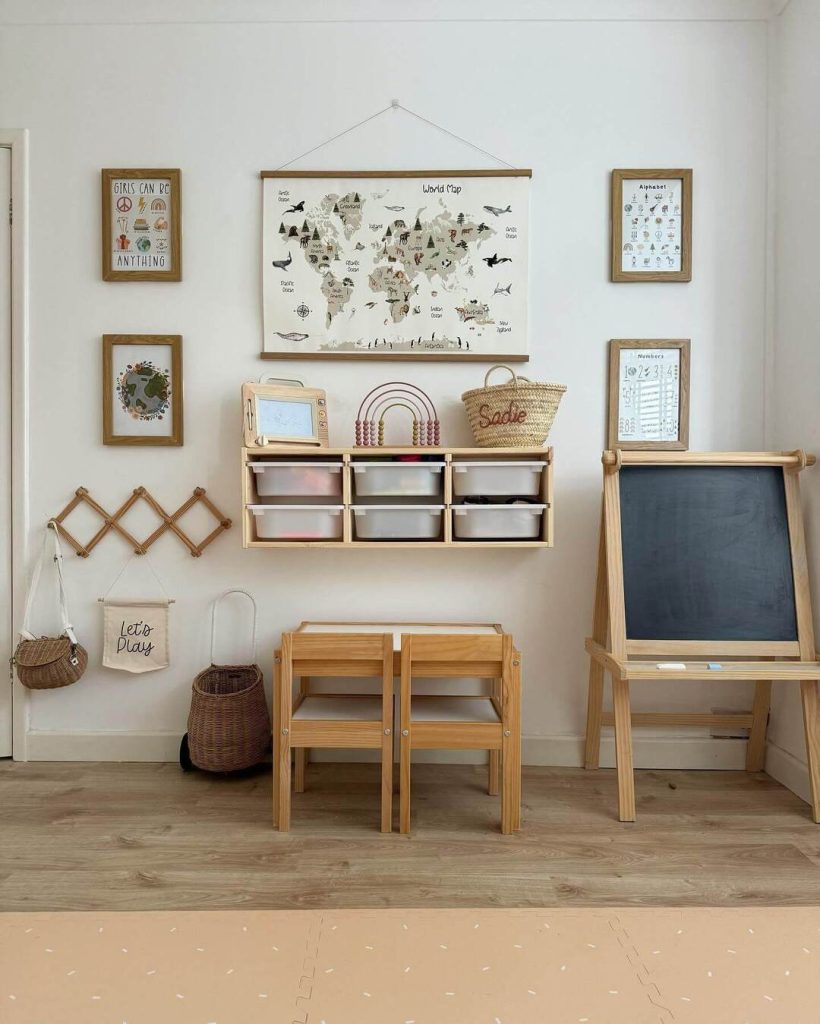
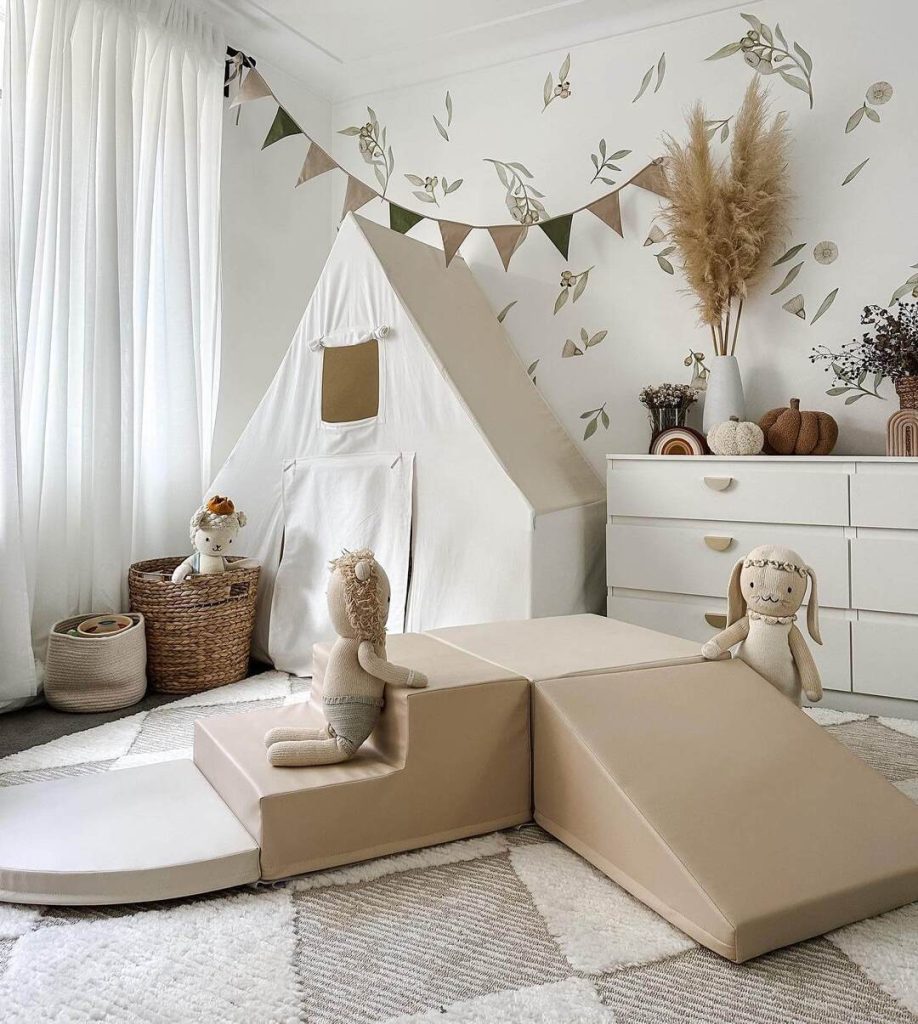
Incorporating Functional Furniture and Storage Solutions
Montessori-inspired playrooms place a strong emphasis on independence through accessible furniture and storage solutions. Everything should be within reach, allowing children to use and organize the space autonomously. Incorporating multifunctional furniture pieces can also help maximize available space while keeping the room design minimalistic and neat.
Functional Furniture Ideas for a Montessori Playroom
- Low Shelves: Provide easy access to toys and allow children to select their activities without assistance.
- A Worktable with Chairs: A designated area for crafting, working, and engaging in more focused tasks like puzzles and drawing.
- Floor Cushions or Rugs: Create comfortable spaces where kids are encouraged to sit, read, and engage in quiet activities.
- Modular Play Sofa: A flexible furniture piece that encourages creative play, allowing children to build and reconfigure for various activities.
- Multi-purpose Storage Boxes: Innovative solutions that combine seating and storage help keep the space organized while maintaining a minimalist aesthetic.
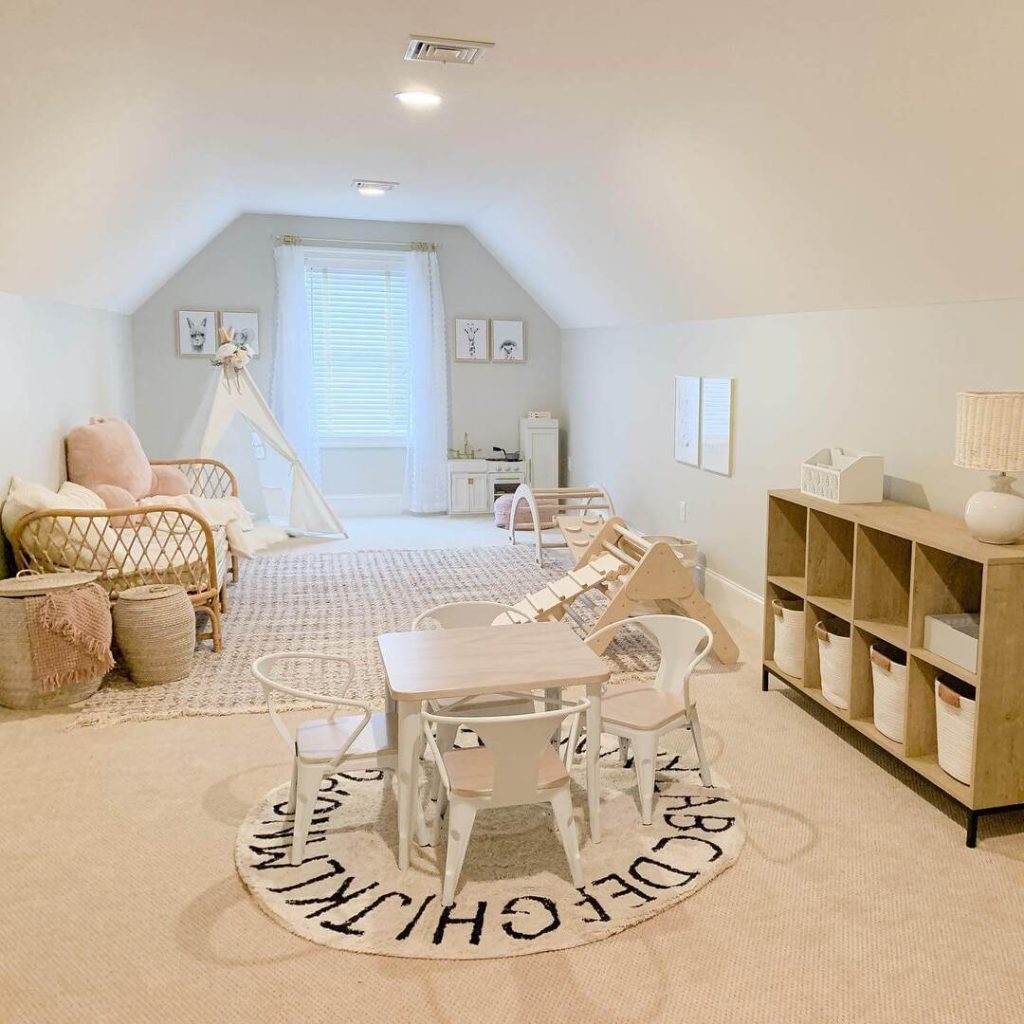
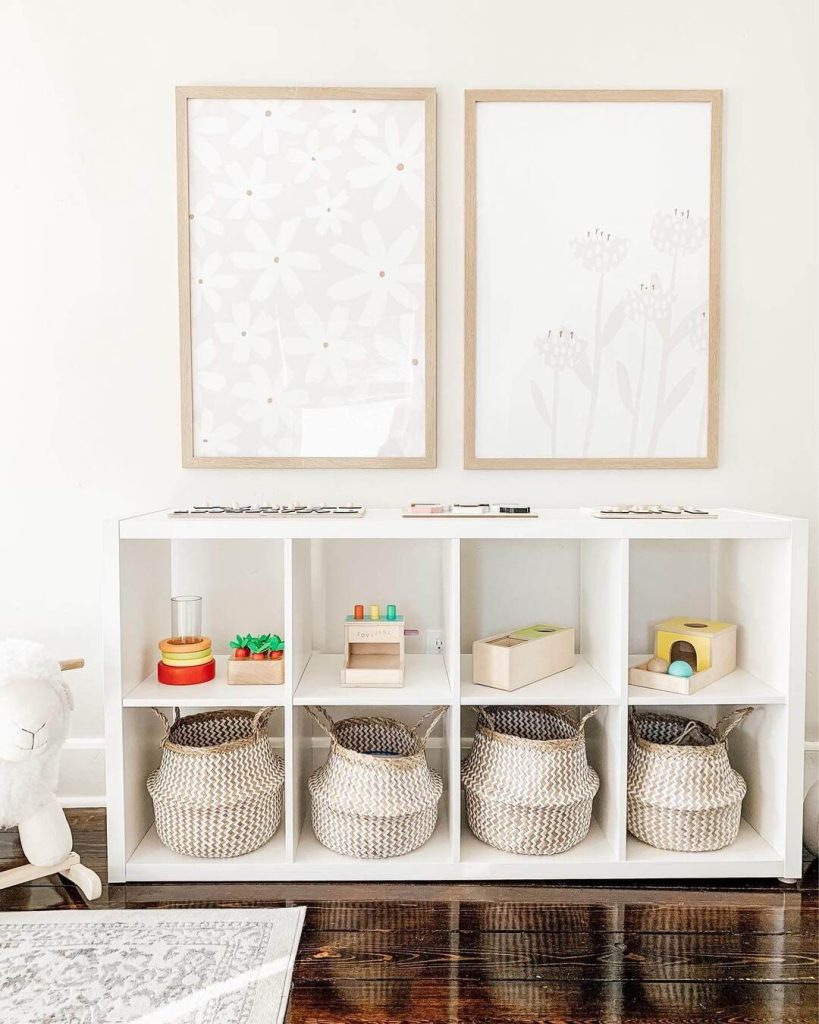
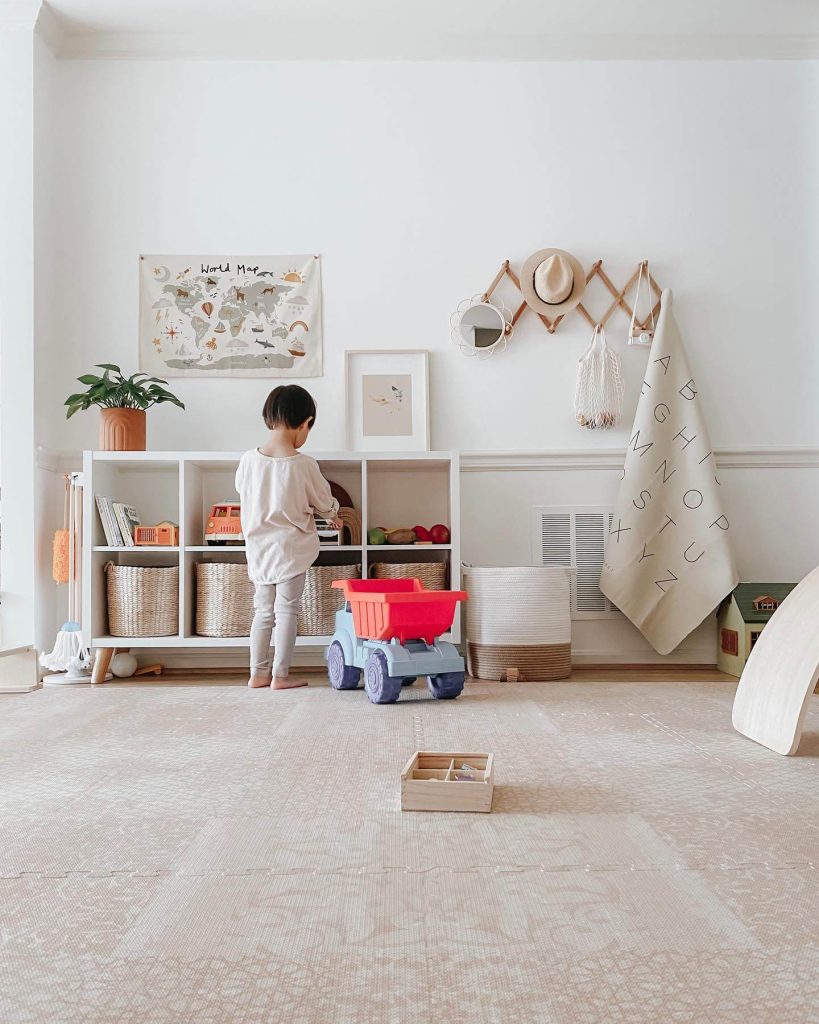
Creating Open Space for Movement and Exploration
A core value of Montessori education is encouraging freedom of movement and exploration, which fosters physical development and curiosity. Keeping the playroom design simple, with a limited supply of furniture and well-defined activity spaces, ensures there is room for unrestricted movement and imaginative activities.
Tips for Maximizing Playroom Space
- Resist Overcrowding: Be mindful of the size of the room when selecting and arranging furniture to prevent cramped areas.
- Create Designated Zones: Set up dedicated areas for different activities, such as quiet reading nooks or craft stations.
- Avoid Large Immovable Toys: Opt for smaller movable items that can be easily put away when not in use or switched out during toy rotations.
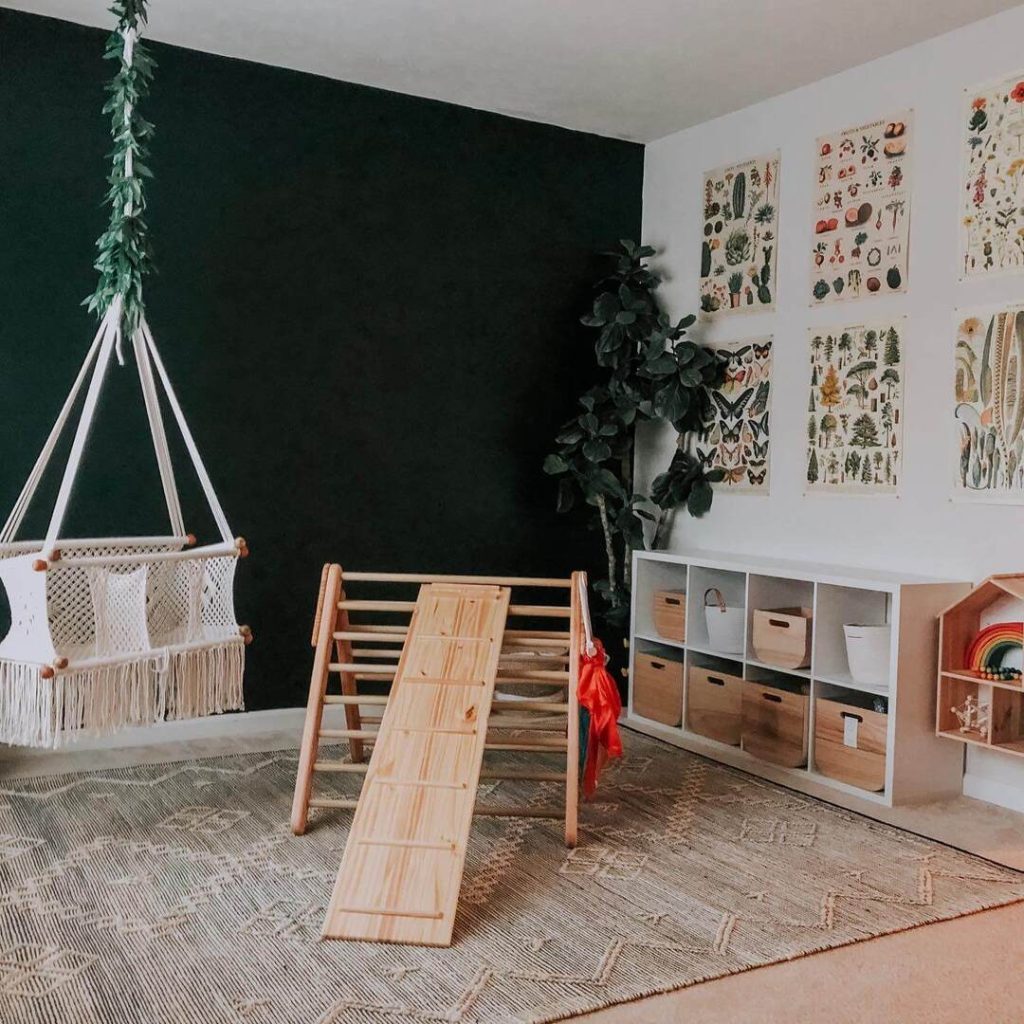
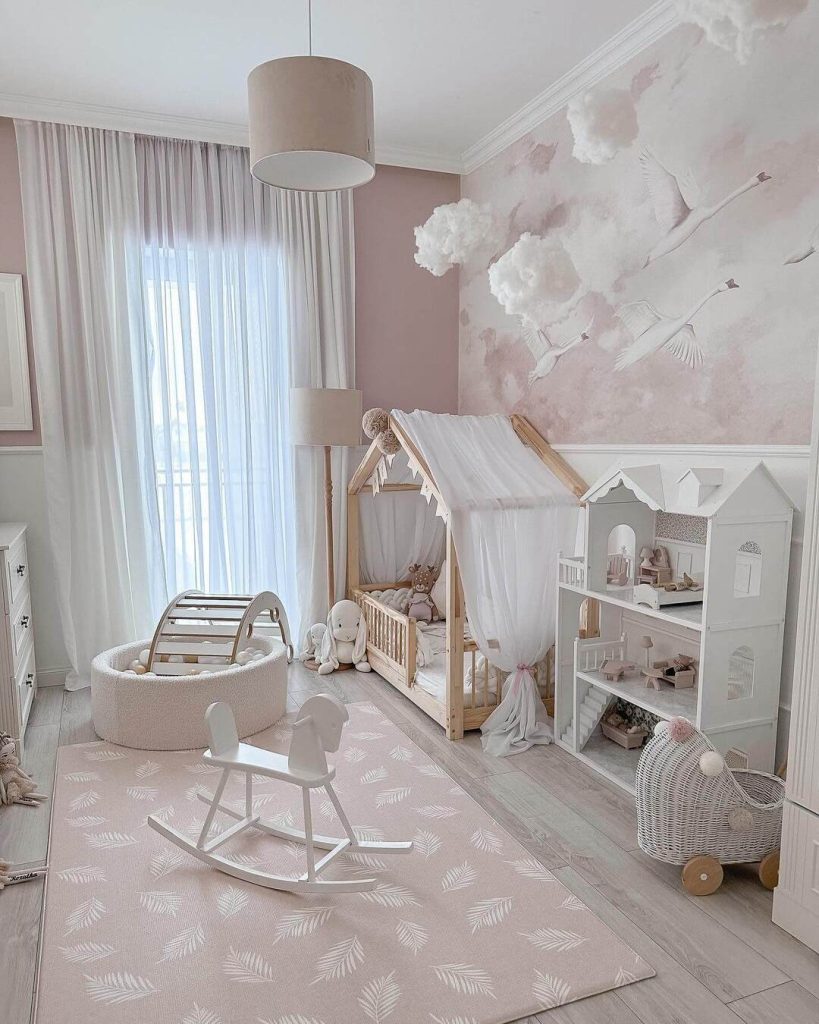
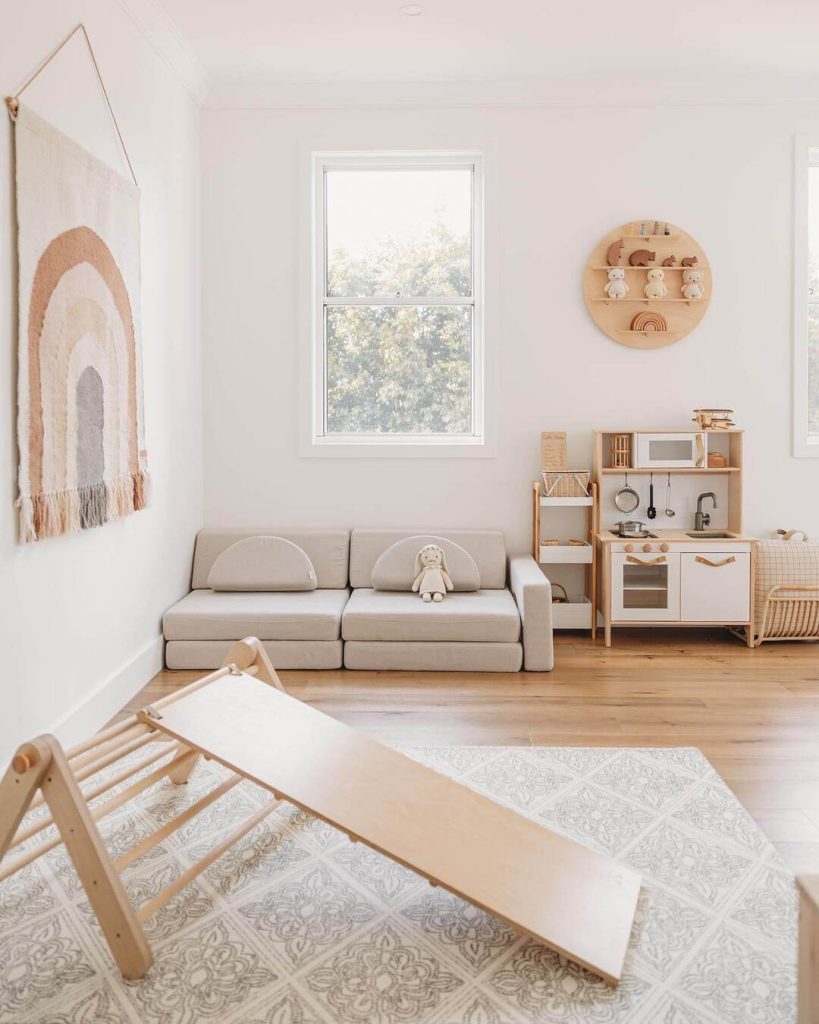
Incorporating Elements of Nature and Real-World Objects
Montessori’s education emphasizes the importance of connecting children with nature and their environment. An ideal Montessori playroom incorporates natural elements like plants, flowers, and materials to bring the outdoors in and create a soothing atmosphere. Integrating real-world objects also supports independent learning and creative exploration.
Nature-Inspired Ideas for Montessori Playrooms
- Indoor Plants: Lush greenery that adds an organic touch while helping purify air quality.
- Natural Materials: Wood, wicker, cotton, and linen for furniture and decor contribute to a warm, earthy aesthetic.
- Real-World Objects as Toys: Provide opportunities for practical life skills development by integrating familiar household items (like brooms, whisk, containers, etc.) into playtime.
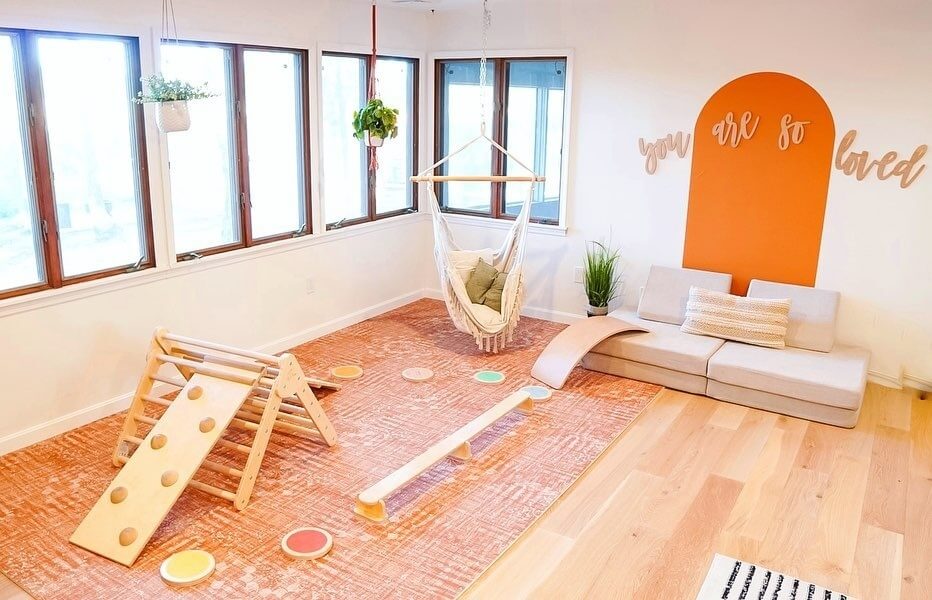
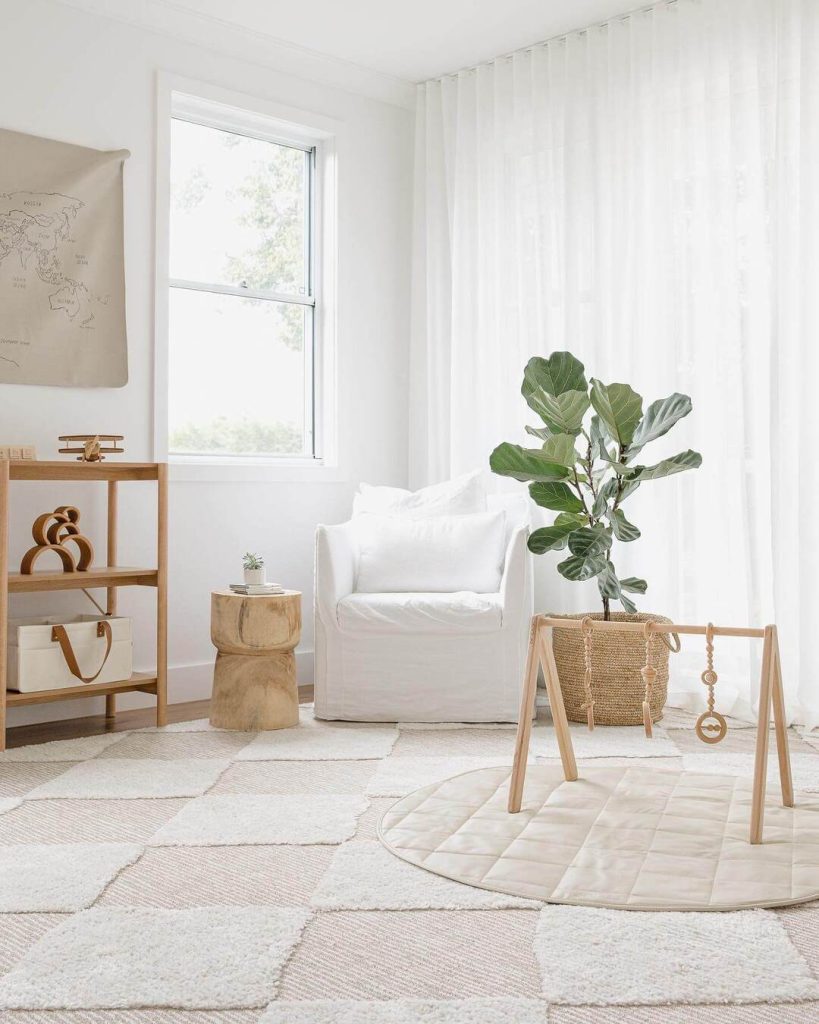
Establishing a Reading Space with Curated Books
A dedicated reading area in a Montessori playroom cultivates a love for literature and self-guided learning. By carefully selecting books that are age-appropriate and diverse in content, you can create an inviting space for children to immerse themselves in stories and information. This quiet corner supports concentration and allows children to explore topics that interest them, fostering independent learning and imagination.
Creating a Montessori-Friendly Reading Nook
- Comfortable Seating: Include cozy seating options like bean bags, floor cushions, or a small couch, making the space welcoming and comfortable for extended reading sessions.
- Accessible Bookshelves: Use low, forward-facing bookshelves to display books, allowing children to easily see and choose what they want to read.
- Diverse Book Selection: Offer a range of books covering various subjects, cultures, and perspectives to broaden children’s understanding of the world around them.
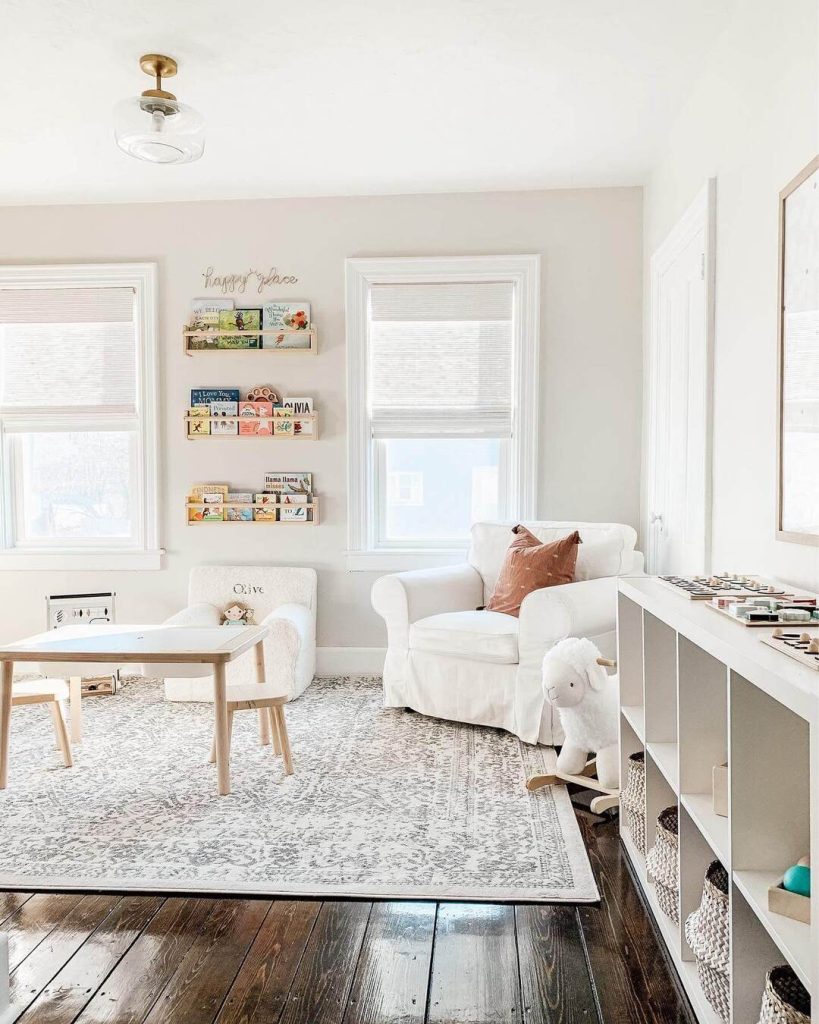
Creating an Uncluttered Playroom Environment
One of the key principles of Montessori is creating an environment that fosters focus and deep engagement in activities. A well-organized and clutter-free space is essential to support this concept. Minimalist elements also help avoid overstimulation and make it easier for kids to select their activity for the day.
Tips for Maintaining a Clutter-Free Montessori Playroom
- Remove Broken and Outgrown Items: Discard or recycle any broken toys and remove items that are no longer age-appropriate or interesting to your child.
- Implement Toy Rotation: Choose a select number of age-appropriate toys and activities to display in the room and rotate them every few weeks to maintain freshness and variety.
- Limit Visual Distractions: Stick with a neutral color palette and simple artwork that encourages focus on the kid’s chosen tasks without causing overstimulation.
- Limit Quantity: Reduce the overall number of toys and materials in the playroom. Having fewer choices helps children focus and engage more deeply with the activities available.
- Create Defined Spaces: Designate specific areas for different types of activities, such as a reading nook, a craft area, or a space for puzzles and games. This helps maintain order and clarity in the playroom.
- Maintain Regularly: Make decluttering and reorganizing a regular activity. Periodically assess the space and make adjustments as your child grows and their interests change.
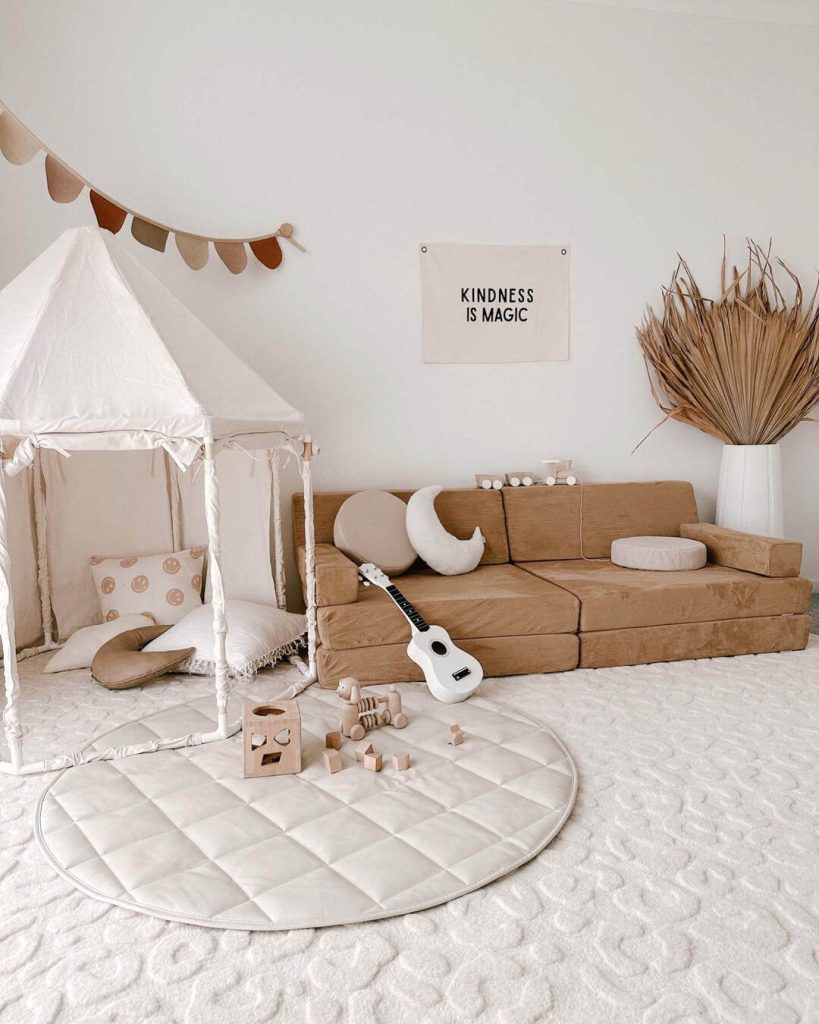
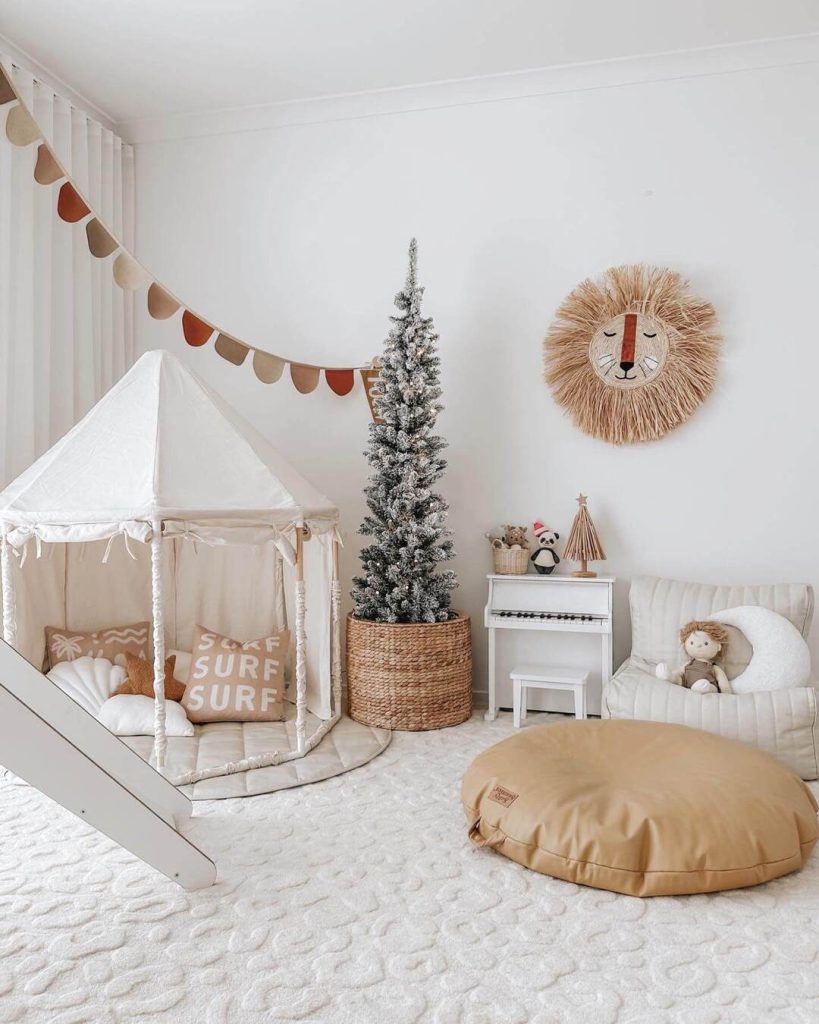
A minimalist Montessori playroom fosters independence, creativity, and focus while maintaining an organized and clutter-free environment. By incorporating the ideas discussed above, you can create a warm and inviting space that offers endless opportunities for learning, growth, and enjoyment for children in their early developmental years.

